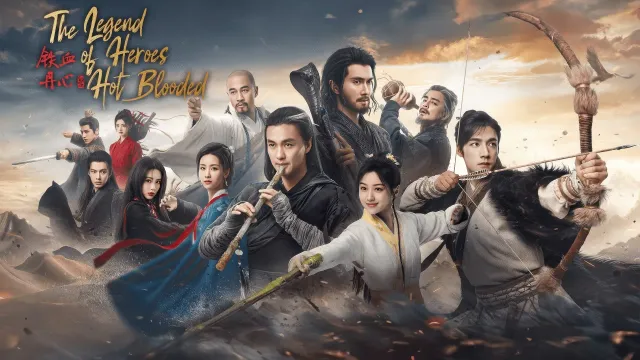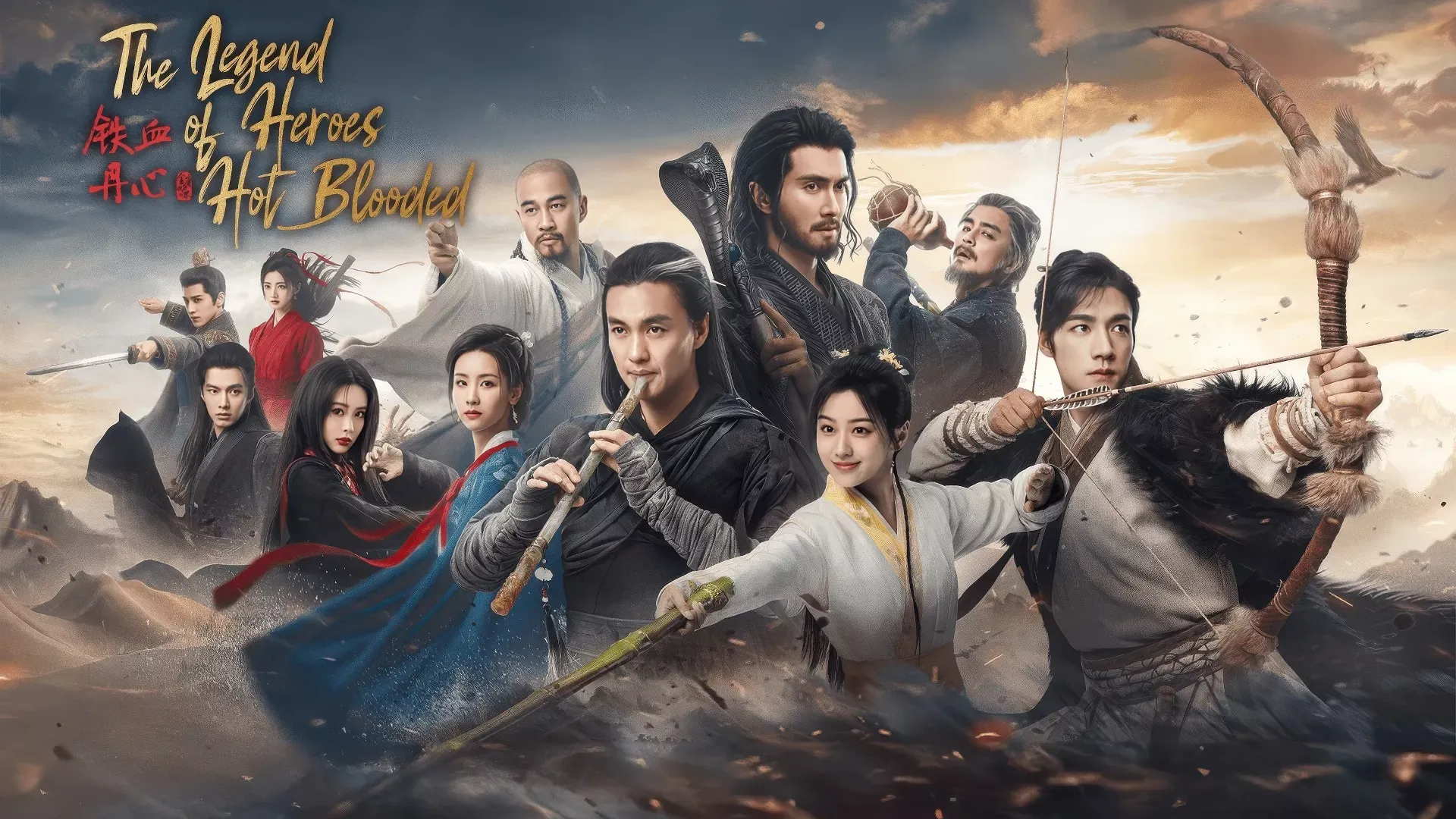Mongol Empire (simplified: 蒙古帝国, traditional: 蒙古帝國, pinyin: Měnggǔ Dìguó) was the emerging nomadic power under Genghis Khan that would eventually become the largest contiguous empire in world history. During the events of The Legend of the Condor Heroes, the empire was in its early stages of expansion, representing a new and formidable threat to the established powers of the Southern Song Dynasty and Jin Empire.
The Mongol Empire represented the most dynamic and expansionist nomadic power of the medieval period. Founded by Genghis Khan, the empire combined unprecedented military innovation with sophisticated political organisation, creating a force that would eventually dominate much of Eurasia. The empire’s early period, as depicted in The Legend of the Condor Heroes, shows the emergence of this world-changing power.
The Mongol’s governance was characterized by a unique system that emphasized meritocracy, religious tolerance, and military efficiency. This system allowed the empire to integrate diverse populations while maintaining its distinctive nomadic identity. The empire’s military innovations, particularly its cavalry tactics and organisational structure, made it a revolutionary force in warfare.
History
Foundation and early development
The Mongol Empire was founded by Genghis Khan in 1206 CE, who unified the various Mongol tribes and established a powerful nomadic empire. The empire’s early rulers focused on consolidating power in the Mongolian Plateau and establishing the administrative and military systems that would enable rapid expansion.
The Mongol’s unique governance system emphasized meritocracy and religious tolerance, allowing the empire to integrate diverse populations while maintaining its distinctive cultural identity. This system included sophisticated military organisation and innovative administrative practices.
Expansion and conquest
During its early period, the Mongol Empire focused on consolidating control over the Mongolian Plateau and establishing relationships with neighboring powers:
- Mongolian Plateau: Core territories and traditional grazing lands
- Northern China: Initial conquests and border regions
- Central Asia: Early expansion into western territories
- Korean Peninsula: Diplomatic relationships and trade connections
Political landscape during the novel
During the events of The Legend of the Condor Heroes, the Mongol Empire was under the leadership of Genghis Khan, who faced complex challenges:
- Emerging power: Establishing the empire’s position among established states
- Military innovation: Developing new tactics and organisational structures
- Diplomatic complexity: Managing relationships with multiple neighboring powers
- Cultural integration: Balancing Mongol traditions with conquered populations
Organisation
Imperial government
The Mongol Empire operated under a sophisticated military-administrative system:
Khan and Court:
- Genghis Khan - The supreme leader and military commander
- Mongol nobility - Traditional ruling class with military responsibilities
- Meritocratic administration - Officials selected based on ability and loyalty
Administrative Structure:
- Military Command: Centralized military hierarchy with emphasis on mobility
- Civil Administration: Merit-based system for governing conquered territories
- Diplomatic Corps: Officials responsible for relations with neighboring states
Cultural integration
The Mongols maintained a unique approach to cultural integration:
Mongol Traditions:
- Preservation of nomadic customs and military traditions
- Mongol language and cultural practices in court
- Emphasis on martial prowess and hunting skills
Religious Tolerance:
- Policy of religious freedom for conquered populations
- Integration of diverse religious practices
- Use of religious leaders as local administrators
Martial arts abilities
Nomadic martial traditions
The Mongol Empire maintained distinctive martial arts traditions:
Cavalry techniques:
- Specialized mounted combat skills
- Archery and horseback fighting
- Coordination between horse and rider
Mongol martial arts:
- Traditional nomadic fighting styles
- Emphasis on mobility and speed
- Integration of hunting skills with combat
Military organisation
The Mongol military was organized around nomadic traditions:
Cavalry forces:
- Elite mounted units as the core of the army
- Specialized archery and mounted combat training
- Rapid deployment and mobility capabilities
Tactical innovations:
- New organisational structures for large-scale warfare
- Integration of various tribal military traditions
- Advanced communication and coordination systems
Philosophy
Nomadic values
The Mongol Empire was deeply influenced by nomadic cultural values:
Martial prowess:
- Emphasis on military skill and bravery
- Hunting and martial arts as central cultural activities
- Respect for strength and martial ability
Meritocracy:
- Value placed on ability over birth
- Promotion based on merit and loyalty
- Emphasis on personal honourand achievement
Cultural synthesis
The Mongols maintained a sophisticated approach to cultural integration:
Religious tolerance:
- Policy of religious freedom for all subjects
- Integration of diverse religious practices
- Use of religious leaders in administration
Practical governance:
- Focus on effective administration over ideological purity
- Adaptation to local conditions and populations
- Balance between tradition and innovation
Notable members
Imperial family
- Genghis Khan (成吉思汗 – Chéngjísīhán) – Supreme leader and founder of the empire
- Mongol princes – Various members of the ruling family
Military leaders
- Mongol commanders – Leaders of the empire’s military forces
- Tribal leaders – Chiefs of various Mongol tribes
Administrative officials
- Civil administrators – Officials responsible for governing conquered territories
- Diplomatic officials – Officials responsible for relations with other states
Relationships
Alliances
The Mongol Empire maintained complex diplomatic relationships:
Regional powers:
- Complex relationships with various neighboring states
- Trade relationships and cultural exchanges
- Diplomatic cooperation on regional issues
Tribal alliances:
- Integration of various nomadic tribes
- Relationships with conquered peoples
- Use of tribal leaders as local administrators
Rivalries
The Mongols faced significant challenges from neighboring powers:
Jin Empire:
- Primary military and political rival
- Competition for control of northern territories
- Complex diplomatic relationship with periods of conflict
Southern Song Dynasty:
- Emerging threat from the south
- Competition for control of trade routes and resources
- Intermittent conflicts and diplomatic negotiations
Political connections
The Mongols maintained sophisticated political networks:
Tribal integration:
- Unification of various Mongol tribes
- Integration of conquered peoples into imperial structure
- Use of tribal leaders as local administrators
Trade networks:
- Control of important trade routes between east and west
- Economic relationships with neighboring states
- Use of trade to maintain political influence
Locations
Capital and administrative centers
- Karakorum – Imperial capital and administrative center
- Imperial Palace – Residence of the khan and center of government
- Military headquarters – Centers for military command and training
Military bases
- Border fortifications – Defensive positions along frontiers
- Cavalry training grounds – Facilities for mounted combat training
- Tribal encampments – Traditional nomadic settlements
Cultural centers
- Buddhist temples – Religious institutions with imperial patronage
- Trade centers – Major cities serving as economic hubs
- Tribal gathering places – Traditional meeting sites for nomadic groups
Behind the scenes
Historical background
The Mongol Empire (1206-1368 CE) represented one of the most significant empires in world history. The empire was characterized by:
Military Innovations:
- Revolutionary cavalry tactics and organisation
- Advanced communication and coordination systems
- Integration of various tribal military traditions
- Unprecedented scale of military operations
Political Achievements:
- Sophisticated meritocratic administrative system
- Policy of religious tolerance and cultural integration
- Advanced diplomatic relationships with neighboring states
- Unique synthesis of nomadic and sedentary governance
The Mongol context
The Mongol people were a nomadic group from the Mongolian Plateau:
Cultural Distinctiveness:
- Unique language and cultural traditions
- Sophisticated nomadic lifestyle and military skills
- Advanced metalworking and artistic traditions
- Complex social organisation and political structures
Historical Significance:
- Created the largest contiguous empire in world history
- Established sophisticated administrative systems
- Influenced political and cultural development across Eurasia
- Left lasting cultural and political legacy
Cultural impact and legacy
The Mongol Empire left a profound impact on world history:
Political Legacy:
- Administrative innovations influenced later empires
- Diplomatic practices that shaped international relations
- Military tactics that revolutionized warfare
Cultural Influence:
- Unprecedented cultural exchange across Eurasia
- Artistic and architectural achievements
- Religious and cultural exchanges across the region
In Jin Yong’s works
The Mongol Empire serves as a crucial historical backdrop in The Legend of the Condor Heroes, representing:
Emerging Power:
- The rise of a new and formidable force
- The challenge to established political orders
- The integration of diverse populations under imperial rule
Cultural Themes:
- The contrast between nomadic and sedentary cultures
- The role of military innovation in political success
- The complexity of ethnic identity and political loyalty
The Mongol’s revolutionary military and political innovations provide the foundation for the novel’s exploration of power, loyalty, and the complex relationships between different cultural traditions.
See also
External links
- Mongol Empire on Wikipedia
- Genghis Khan on Wikipedia
- Mongol people on Wikipedia
- Karakorum on Wikipedia

